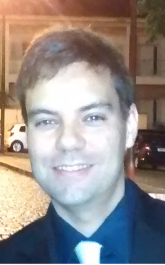Here are brief descriptions of some recent projects that I have been involved with. For a complete list of my research papers and my CV, check here. I am willing to supervise new students (both undergraduate and graduate research). If you are interested, contact me by email.
_______________________________________________________________________
Quasinormal modes of black holes: Quasinormal modes (QNMs) are the modes of energy dissipation of a perturbed object or field (e.g. the ringing of a bell or the ringing of a glass). In General Relativity, any type of perturbation in the vicinity of a black hole will originate a decay process characterized by three stages: first, there is
an outburst of radiation which is highly dependent on the initial perturbation; second, there is a long period of quasinormal oscillation, and finally, at later times, the QNMs damp out and become dominated by a power law tail. Together with a collaborator, in arxiv:1409.7440 we have studied (through semianalytical and numerical techniques) the QNMs of charged fields (spin 0 and spin 1/2) around a charged black hole. In particular, we have shown that, as the extremal limit of black hole charge is approached, the imaginary part of the quasinormal frequencies approach zero.
_______________________________________________________________________
Superradiance: In standard scattering processes, incident waves lose energy due to interaction with the media they traverse. However, in some special systems (like rotating black holes), the amplitude of the reflected wave is larger than the amplitude of the incoming one, meaning that energy is extracted from the system. Together with collaborators, I have studied many aspects of this interesting phenomenon. For example, in arxiv:0909.2317, we have investigated the crucial elements that make superradiance possible. In arxiv:1208.3601, using the analogue gravity framework, we have studied how dispersion affects superradiance. Furthermore, in arxiv:1306.3137, we have shown that superradiance is possible in charged and/or rotating stars. More recently, in arxiv:1411.1662, we have evaluated the superradiant amplification factor in a very realistic model of a draining bathtub.
_______________________________________________________________________
Cosmic censorship conjecture: The weak cosmic censorship conjecture states, basically, that any singularity originated from gravitational collapse must be hidden inside the event horizon of a black hole. Some typical tests of the conjecture consist on gedanken experiments trying to destroy the event horizon of a black hole and consequently exposing its inner singularity to an outside observer. The basic idea behind the most common gedanken experiments is to overcharge or overspin a black hole by making it absorb a test particle with enough charge or angular momentum. Together with collaborators, I have studied some gedanken experiments based on quantum tunneling. For example, in arxiv:0804.3921, we have demonstrated that electrically neutral massless fermions evade possible back reactions effects related to superradiance, suggesting that a Kerr black hole can be overspun. In arxiv:0905.1077, we analyse the overspinning of a nearly-extreme charged black hole by quantum tunneling and show that the large angular momentum of the incident particle does not constitute an obvious impediment to the success of the process. Finally, in arxiv:1109.3364, we have shown that charged black holes can be overcharged by the quantum tunneling of charged particles.
email: mauricio.richartz at ufabc.edu.br
Centro de Matemática, Computação e Cognição
Universidade Federal do ABC (UFABC)
Maurício Richartz
